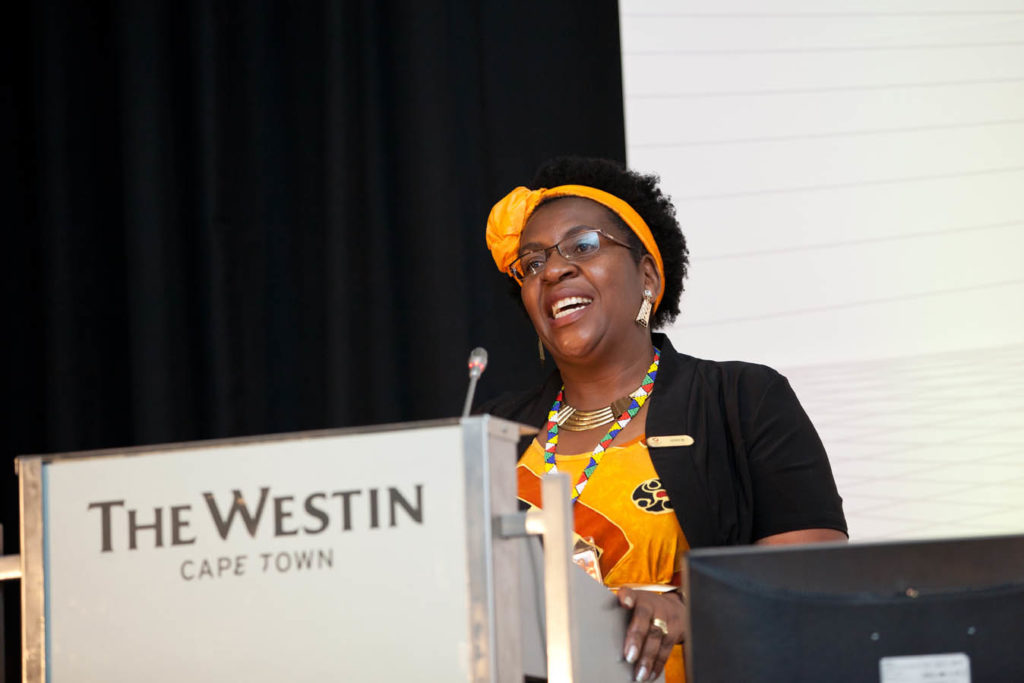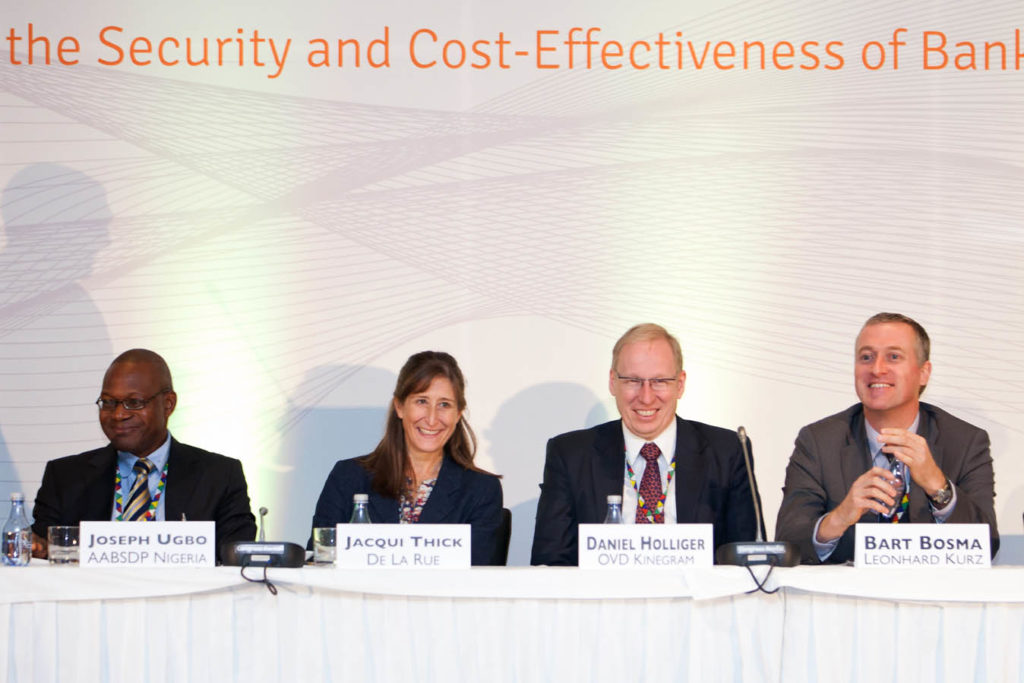2014 Review: Cape Town, South Africa
‘One Africa, One Voice’ was the call of Joyce Kumbirai of South African Bank Note Company (SABN) in her opening remarks at the African Banknote Conference, held in Cape Town.
The conference was hosted by SABN on behalf of the Association of African Banknote and Security Document Printers (AABDSP) whose President, CEO of Nigerian Security Printing and Minting Co Joseph Ugbo, welcomed the delegates on behalf of the association.
The biennial conference rotates between the eight members of the AABSDP and has grown steadily since its inception in 1991. This event was by far the largest in its history, with Cape Town welcoming 330 people from 105 different organisations and 45 countries.
They included representatives from the central banks, governments and the printing works of the AABSDP member countries, along with representatives from another 14 African central banks, bringing the total number attending to 22 out of the possible 42 central banks in Africa.

It was the specific intention of SABN and the South African Reserve Bank (SARB) to expand the scope of the conference to include users (ie. central banks), with SARB Deputy Governor Francois Groepe, who gave the keynote presentation, describing himself as being somewhat unusual among central bankers in thinking that ‘currency is one of the most exciting and intriguing aspects of a central bank’s functions’.
He pointed out that, since the financial crisis, the mandate of central banks has been extended to include financial stability. The supply of currency is the first pillar of such stability, and the lack of it can lead to social instability which in turn leads to economic and financial instability. So while currency is often viewed by central banks as a side issue, it is in fact central to their reputation and function.
Speaking on the future of cash, he pondered whether Africa – which has seen steady growth in cash in recent years – will become like Scandinavia (where cash is decreasing), or whether it will follow a different path.
Security, quality and availability remain core to the future of currency, but he sees several challenges that need to be overcome. One is the lack of common operating standards within the industry. ‘Doctors around the world subscribe to the same standards, and interpretation of results are the same wherever you are. Why not the same with banknotes?’ he asked.
Another challenge is that ‘power’ is distributed among too few players, potentially leading to a monopoly supply situation. And another still is the lack of technical expertise with central banks. ‘There is an asymmetry of knowledge between central banks and suppliers’, he said, ‘which can be partially overcome by better training and knowledge-sharing’ (a theme that was central to the Currency Indaba of the previous day).
THE FUTURE OF CASH
The future of cash was a theme that wove throughout the conference, from the very first presentation (by Ralf Wintergerst of Giesecke & Devrient on ‘Where Cash and Mobile Payment Connect’, in which he pointed out the drawbacks of mobile payments – principally trust and security) to the very last presentation (by Richard Haycock from Currency Research on ‘The Case for Cash: Dispelling the Myths’, in which he did just that in a manner that had the delegates roaring with laughter, particularly when he described many of the claims against cash as little more than ‘horse manure’).

The intervening days saw panel discussions and presentations on a number of key topics, including introducing a new series, latest developments in banknote security, cash management in both emerging markets and advanced countries, the growing convergence of ID and payments, extending substrate life, developments in quality management, coin developments and the challenges of counterfeiting technology.
There were also specialist ‘expert’ tracks on specifying paper, best practice in independent security feature selection and current technologies for upgrading coin series, with delegates having the option to attend two out of the three.
NETWORKING AND SOCIAL EVENTS
A particular, and much appreciated, aspect of the conference was the sequence of social events attended by all delegates, which showed off the social and cultural highlights of Cape Town. They included a drumming circle to get delegates into the spirit of the event, a visit to the famous Gold Restaurant renowned for its cuisine from around Africa, and a vineyard trip.
Another aspect was the engagement by all delegates throughout the sessions, with active participation in these, lively questions and answers at the end of each session, and continuing discussion and debate in the refreshment break and social events.
As such, the two key objectives of the hosts and SARB were achieved – namely, providing an event that was both fully inclusive and not afraid to tackle the key issues (and points of contention) between the different parts of the industry – the common goals for ‘improving the security and cost-effectiveness of banknotes’ (which was the conference theme) notwithstanding.

The conference finale was a gala dinner in the ballroom of the Westin Hotel, at which Mr Ugbo formally handed over the presidency of the AABSDP to Joyce Kumbirai. She will hold the position for two years before it passes to the host of the next event, which is the Central Bank of Egypt printworks, with African Banknote next taking place in 2016.
This has been the very best of conferences…best of the best…
Great networking and industry opportunities debated and an absolute awesome experience.
Very informative conference. I was able to connect with many representations from the industry.